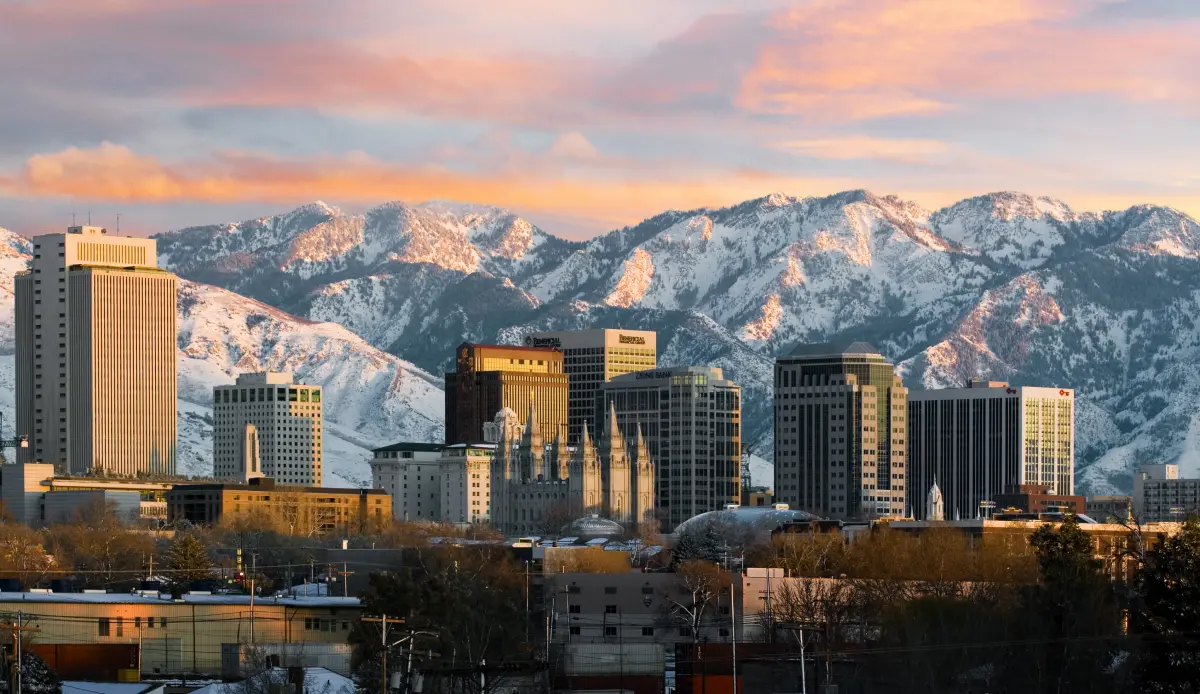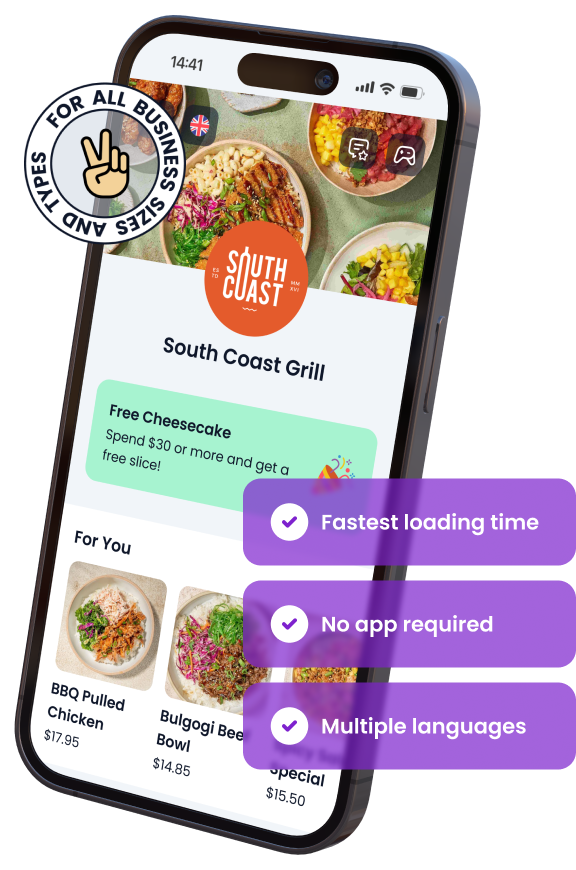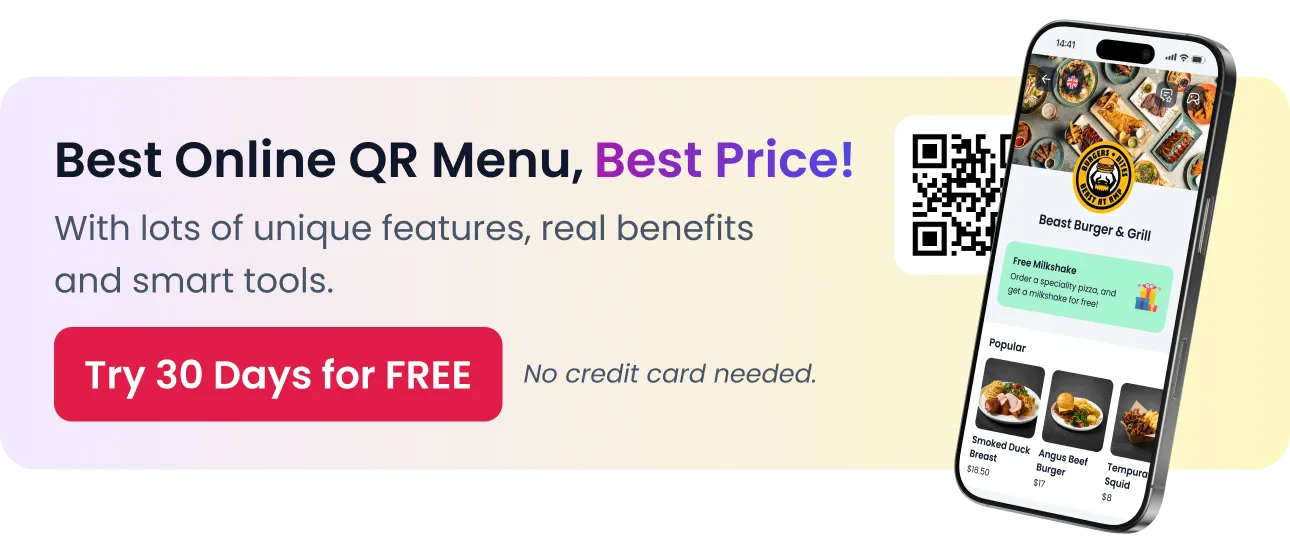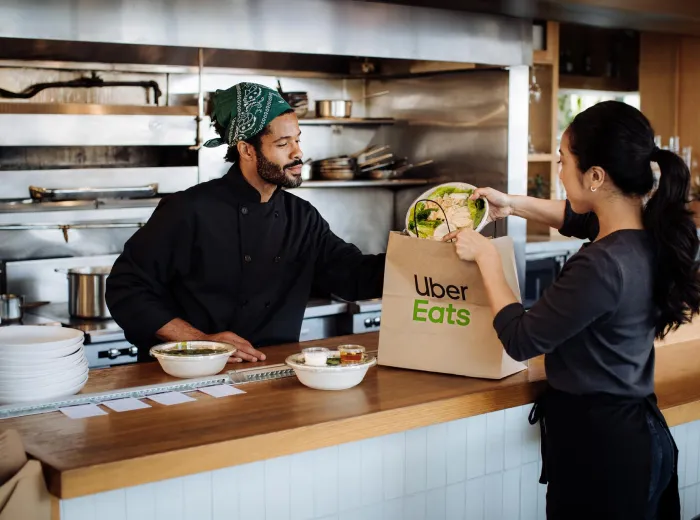

How to Choose a Good Location for Your Restaurant in Utah?
Choosing the right location for your restaurant is one of the most critical decisions you’ll make as a business owner. In Utah, where the restaurant industry is thriving, selecting a location that aligns with your target audience, budget, and long-term growth plans can set the foundation for success. A great location doesn’t just attract more foot traffic—it also plays a pivotal role in customer retention, operational efficiency, and overall profitability.
Utah’s unique demographics, diverse landscapes, and growing economy offer exciting opportunities for restaurant owners. Whether you’re looking to cater to locals in a bustling urban setting like Salt Lake City or prefer the quieter charm of suburban areas, understanding the factors that contribute to a successful location is essential. From legal considerations to customer access and community vibes, several elements must be taken into account before you commit to a specific spot.
In this guide, we’ll explore everything you need to know about finding the perfect restaurant location in Utah, covering critical aspects like market research, local regulations, budgeting, and long-term scalability. Let’s dive in and uncover how you can make the best choice for your restaurant’s future.
Would you like to listen our deep-dive conversation about this article?
Understanding the Utah Restaurant Market
Utah’s restaurant scene is dynamic, with a growing population and diverse customer base. However, understanding the specific characteristics of Utah’s market is key to choosing a location that maximizes your chances for success. From local dining preferences to industry trends, this section will guide you through the essentials of navigating the Utah restaurant market.
What Makes Utah’s Market Unique?
Utah offers a distinct mix of urban and suburban settings, with a strong emphasis on family-oriented dining and outdoor activities. The market is influenced by:
- Family-centric culture: Large families often dine together, making family-friendly establishments a must.
- Health-conscious consumers: Utah residents tend to favor health-conscious dining options, including organic, vegan, and locally-sourced ingredients.
- Outdoor lifestyle: With an active population, many restaurants cater to those seeking casual, quick dining options after outdoor activities such as hiking or skiing.
These unique factors make it essential to understand local customer habits before selecting your restaurant’s location.
Key Restaurant Demographics to Target
When targeting the Utah market, consider the following demographic factors:
- Urban vs. Suburban Considerations: Utah’s larger cities like Salt Lake City and Provo cater to a mix of professionals, students, and tourists, while suburban areas focus more on family dining.
- Age and Income: Utah has a younger median age compared to national averages, with many young professionals and families contributing to disposable income that is often spent on dining out.
- Dietary Preferences: Catering to niche markets such as vegan, gluten-free, and organic eaters can also give you an edge in certain locations.
Understanding these demographics allows you to tailor your restaurant’s concept to suit the local population, ensuring you appeal to the right customer base.
Growth Trends in Utah’s Restaurant Industry
The restaurant industry in Utah has seen steady growth in recent years, driven by both population increases and tourism. Key trends include:
- Fast-casual dominance: Fast-casual dining is on the rise, providing quicker service without sacrificing quality.
- Increased focus on sustainability: More restaurants are incorporating sustainable practices, such as reducing food waste and using eco-friendly packaging.
- Technology integration: Customers increasingly expect online ordering, delivery options, and digital loyalty programs.
By staying informed about these trends, you can ensure your restaurant remains competitive and forward-thinking, which will help you choose a location that supports long-term success.
How to Research Potential Restaurant Locations
Thorough research is crucial before selecting a restaurant location in Utah. Understanding the local market, analyzing competitor locations, and assessing traffic patterns will help you make an informed decision. In this section, we’ll break down the steps involved in researching and choosing the right spot for your restaurant.
Conducting Market Research in Utah
Market research is the foundation of any successful location choice. It helps you identify areas with high demand for dining options and provides insight into local preferences. Here are a few ways to conduct market research:
- Use online tools: Platforms like Google My Business and Yelp allow you to explore popular restaurant locations, customer reviews, and average restaurant ratings.
- Look at population density and growth: Research which areas in Utah are seeing the highest population growth. This can indicate rising demand for dining establishments.
- Identify underserved areas: Find neighborhoods with fewer dining options, as this might signal an opportunity to stand out in the market.
By gathering and analyzing this data, you can narrow down locations that align with your restaurant’s concept and target audience.
Investigating Local Competitors
Competitor analysis is a key part of location research. Knowing where your competitors are and how they are performing will help you determine if the market is saturated or if there is room for your restaurant to thrive. Here’s how to approach competitor research:
- Map out direct and indirect competitors: Identify restaurants that offer similar cuisines and concepts, as well as indirect competitors (e.g., fast-casual vs. fine dining).
- Assess competitor success: Visit local restaurants, examine their menus, and gauge how busy they are during different times of the day.
- Analyze gaps in the market: Look for unmet needs, such as unique cuisine types or dining experiences that are not yet present in the area.
This type of competitor analysis will give you a clearer picture of whether a location is a smart choice or too competitive.
Assessing Foot Traffic and Visibility
Foot traffic and visibility are two essential factors that can significantly impact the success of your restaurant. A location with high foot traffic can drive more spontaneous visits, while good visibility ensures that customers easily spot your establishment. Here’s how to assess these elements:
- Measure foot traffic: Observe the area at various times of the day and week to estimate how many people pass by the potential location. Shopping centers, busy streets, and tourist areas are often prime spots.
- Check visibility from the road: Consider whether your restaurant will be easily noticeable to passing cars or pedestrians. A location that is hard to see may struggle, even if foot traffic is high.
- Evaluate accessibility: Ensure that the location is easy to reach, with convenient parking, public transportation access, and walkability.
By thoroughly evaluating foot traffic and visibility, you’ll increase the likelihood that your restaurant attracts both regular and new customers, making the location more profitable.
Analyzing the Legal and Regulatory Environment
Understanding the legal and regulatory environment in Utah is critical to selecting the right location for your restaurant. Zoning laws, alcohol licensing, and health regulations can significantly influence where you can operate, and failure to comply with these regulations can result in costly delays. This section will guide you through the essential legal factors you need to consider.
Zoning Laws and Permits in Utah
Zoning laws dictate where businesses, including restaurants, can be established. Before committing to a location, it’s essential to verify whether the area is zoned for food service. Here’s what to look for:
- Check local zoning maps: These maps outline which types of businesses are allowed in specific areas, whether commercial, residential, or mixed-use.
- Understand permitted restaurant types: Some zones may permit only specific types of food businesses (e.g., fast food vs. fine dining).
- Apply for necessary permits: In addition to zoning compliance, restaurants need to secure various permits, including building permits, health permits, and business licenses.
Working closely with city planning departments or local real estate agents familiar with restaurant zoning will help ensure you’re choosing a legally viable location.
Navigating Utah’s Alcohol Laws
If you plan to serve alcohol in your restaurant, understanding Utah’s unique alcohol laws is essential. Utah has some of the strictest alcohol regulations in the United States, and these laws can vary depending on the location. Key considerations include:
- Liquor license requirements: Restaurants must apply for specific licenses to serve alcohol, with different rules for beer, wine, and spirits.
- Dry areas: Some areas in Utah are considered “dry,” meaning they prohibit the sale of alcohol. Make sure your potential location allows alcohol service.
- Restrictions based on proximity: Utah law may restrict alcohol-serving establishments from being too close to schools, churches, or parks.
Navigating these rules can be complex, but ensuring compliance is vital for your restaurant’s long-term success.
Environmental and Health Compliance
Health and environmental regulations are another critical factor when choosing a restaurant location. You’ll need to ensure your establishment meets both state and local health standards, especially regarding food safety and environmental impact. Consider the following:
- Health department regulations: Every restaurant must pass health inspections before opening. Verify that the building can support the necessary kitchen and sanitation equipment.
- Waste management: Ensure the location has sufficient waste disposal systems, including recycling and composting, if required.
- Compliance with building codes: Buildings must meet specific safety standards, including fire codes and accessibility for people with disabilities.
By addressing these environmental and health compliance issues early on, you can avoid costly surprises and delays when opening your restaurant.
Identifying Your Target Audience in Utah
Understanding your target audience is essential to the success of your restaurant in Utah. Your location should cater to the preferences, demographics, and dining habits of the customers you aim to attract. In this section, we will explore how to define your ideal customer base and consider both local residents and tourists in your strategy.
Defining the Ideal Customer Profile
Before choosing a location, it’s crucial to have a clear picture of who your primary customers will be. Defining the ideal customer profile will help you find a location that aligns with their needs. Consider the following:
- Age and lifestyle: Are you targeting families, young professionals, or retirees? Utah’s population is younger than the national average, with many families and young adults seeking dining options that suit their busy lives.
- Income level: Higher-income areas might support more upscale dining concepts, while middle-income areas may be better for casual or fast-casual restaurants.
- Dining preferences: Consider dietary trends, such as vegan, gluten-free, or organic options, that may be in demand based on the area.
By tailoring your restaurant concept to the characteristics of your ideal customer, you can increase the likelihood of success in a specific location.
Catering to Utah Tourists and Visitors
Tourism is an essential part of Utah’s economy, particularly in areas near national parks, ski resorts, and other attractions. If you’re considering a location in a tourist-heavy area, make sure you factor in how to appeal to out-of-town visitors. Key points include:
- Popular tourist destinations: Cities like Park City, Moab, and Salt Lake City attract visitors year-round. Restaurants in these areas can benefit from a constant influx of new customers.
- Seasonal tourism: In Utah, tourism often follows seasonal patterns. Ski resorts are busy in the winter, while national parks see more visitors in the warmer months. Choose a location that can handle the fluctuations in foot traffic.
- Menu considerations for tourists: Offering regional dishes or unique local experiences can be a great way to attract tourists. Additionally, ensuring your menu appeals to a broad audience is essential when catering to a diverse tourist base.
Focusing on both local residents and tourists can give your restaurant a steady stream of customers and help you make the most of your chosen location.
Choosing Between Urban and Suburban Locations
One of the key decisions when selecting a restaurant location in Utah is whether to settle in an urban or suburban area. Each option has its own set of advantages and challenges, and the right choice depends on your restaurant concept, target audience, and business goals. In this section, we will examine the pros and cons of both urban and suburban locations, helping you determine which is the best fit for your restaurant.
Pros and Cons of Urban Locations in Utah
Urban areas in Utah, such as Salt Lake City and Provo, offer vibrant, high-traffic environments but come with higher costs and more competition. Here are some pros and cons of choosing an urban location:
- Pros:
- Higher foot traffic: Urban centers are typically bustling with people, including professionals, tourists, and residents.
- Diverse customer base: Cities offer a broader range of potential customers, from students and professionals to tourists and locals.
- Public transportation access: Many urban areas in Utah have public transit systems, making it easier for customers to reach your restaurant.
- Cons:
- Higher rent and operational costs: Urban real estate is more expensive, and additional costs such as parking, utilities, and taxes can add up quickly.
- Increased competition: Urban areas tend to be saturated with restaurants, making it harder to stand out from the crowd.
- Limited parking: Many urban locations have limited parking options, which can deter customers who prefer convenience.
While urban locations can provide more exposure and foot traffic, the associated costs and competition need to be carefully weighed.
Suburban Locations: A Growing Trend
Suburban areas in Utah are becoming increasingly popular for restaurants, particularly those catering to families and residential communities. Suburban locations often provide a more relaxed environment, with a focus on family dining and neighborhood engagement. Consider the following pros and cons:
- Pros:
- Lower rent: Suburban real estate is typically more affordable than urban locations, allowing for larger spaces and potentially higher profit margins.
- Family-centric customer base: Many suburban areas are home to families who seek out convenient, family-friendly dining options.
- Community engagement: Suburban restaurants can become local favorites by building relationships with residents and participating in community events.
- Ample parking: Suburban locations often have more parking availability, making it easier for customers to visit.
- Cons:
- Lower foot traffic: Suburban areas may not offer the same level of foot traffic as urban centers, relying more on local residents and repeat customers.
- Fewer tourists: If you plan to attract tourists, suburban locations may not provide the same level of visibility as urban tourist hotspots.
- Limited public transportation: Suburban areas typically have less access to public transit, meaning customers rely more on personal vehicles.
For restaurants that prioritize community connections and family dining, suburban locations can offer significant advantages, often with lower operational costs and less competition compared to urban areas.
By understanding the trade-offs between urban and suburban locations, you can choose the one that aligns with your restaurant’s goals and target audience.
Evaluating Location Costs and Budgeting
When choosing a location for your restaurant in Utah, cost is one of the most critical factors to consider. Balancing the expense of your location with potential revenue is essential for long-term profitability. In this section, we will cover how to assess rent, hidden costs, and create a budget that supports your business goals.
Rent, Leasing, and Purchase Options
The cost of renting or purchasing property can vary significantly depending on the area, so it’s important to weigh your options carefully. Here’s what to consider:
- Cost-per-square-foot: Compare the price per square foot in different areas of Utah. Urban locations like Salt Lake City tend to have higher rates, while suburban or rural locations offer lower costs.
- Leasing vs. buying: While leasing is more common, buying property may be a viable option if you plan to stay long-term. However, it requires a larger upfront investment.
- Negotiating leasing terms: Always negotiate your lease to secure the best terms. Look for flexibility in lease duration, options to renew, and potential for rent increases.
Understanding the cost of rent and lease options will help you decide on a location that fits within your budget while still offering the benefits you need.
Hidden Costs to Consider
Beyond rent, several hidden costs can add up when securing a restaurant location. Be sure to account for the following expenses:
- Buildout costs: If the property isn’t already equipped for restaurant use, you’ll need to budget for buildout and renovations, including kitchen equipment, seating, and décor.
- Utilities: Factor in monthly expenses such as electricity, gas, water, and internet. In older buildings, utility costs may be higher due to inefficient systems.
- Insurance: Restaurant insurance is a necessity, covering property, liability, workers’ compensation, and more. Insurance premiums can vary based on location and risk factors.
- Permits and fees: Local governments often require multiple permits, including health and safety inspections, which come with fees.
By thoroughly assessing these hidden costs upfront, you can avoid budget shortfalls and unexpected expenses later.
Balancing Cost vs. Potential Revenue
While it’s tempting to choose a lower-cost location, it’s crucial to balance the savings with the revenue potential of the location. Here’s how to evaluate whether a location is worth the investment:
- Foot traffic and sales potential: A high-rent location in a busy area might generate more sales than a low-cost space in a less trafficked area. Estimate how much revenue the location can drive based on visibility and accessibility.
- Customer demographics: Ensure the area’s demographics align with your restaurant’s target audience. A well-targeted location may yield higher spending and repeat customers.
- Break-even analysis: Conduct a break-even analysis to determine how much revenue you need to generate to cover rent and operational costs. This helps you assess whether a location will be profitable.
Balancing your budget with potential revenue ensures that your restaurant location not only fits your financial plan but also has the capacity to drive growth.
Is the Location Accessible for Utah Residents?
Accessibility is a critical factor in choosing a restaurant location. Ensuring that your restaurant is easy to reach for a wide range of customers can significantly influence foot traffic and repeat business. In Utah, where driving is common and public transportation may be limited depending on the area, it’s important to consider how accessible your restaurant will be. This section covers the main elements of accessibility, from parking options to drive-thru services.
Importance of Public Transport and Parking
In Utah, many residents rely on their cars, but public transportation also plays a role in urban areas like Salt Lake City. When selecting your restaurant’s location, consider the following:
- Proximity to public transportation: Restaurants near light rail stations, bus stops, or major transit routes can attract more foot traffic from commuters and tourists alike. If you’re in an urban area, this can be a significant advantage.
- Parking availability: In both urban and suburban locations, convenient parking is crucial. Ensure your restaurant offers ample parking or is close to parking facilities. Limited or inconvenient parking can deter potential customers.
- Handicap accessibility: Complying with ADA (Americans with Disabilities Act) standards is not just a legal requirement—it also ensures that all potential customers can easily access your restaurant.
By choosing a location with easy access to both public transportation and parking, you make it more convenient for a broader range of customers to visit.
Drive-Thru and Takeout Opportunities
In Utah, where convenience and speed are highly valued, drive-thru and takeout services have become increasingly popular. Offering these services can give your restaurant a competitive edge, especially in suburban areas. Here’s what to consider:
- Drive-thru capabilities: If your concept allows, having a drive-thru can capture a segment of customers who prefer fast, convenient service. This is especially true in high-traffic suburban areas where families and busy professionals frequent.
- Takeout and curbside pickup: Even if a drive-thru isn’t feasible, make sure the location allows for easy curbside pickup or designated takeout parking spots. Many customers appreciate the convenience of grabbing food without having to dine in.
- Delivery service areas: If you plan to offer delivery, ensure that your location is centrally located within a key delivery zone. Being close to residential or business areas can reduce delivery times and expand your customer base.
Providing accessible services like drive-thru, takeout, and delivery can greatly enhance your restaurant’s appeal, especially to Utah residents who value convenience.
Community and Neighborhood Vibe
The neighborhood and community surrounding your restaurant play a significant role in shaping your business’s success. Utah’s diverse communities, from bustling urban centers to tight-knit suburban neighborhoods, each come with their own distinct character. Selecting a location that aligns with your restaurant’s concept and resonates with the local vibe can help build a loyal customer base and foster long-term growth. In this section, we’ll explore how to evaluate a neighborhood’s atmosphere and its potential impact on your restaurant.
Choosing a Location That Aligns with Your Concept
Your restaurant’s concept should align with the neighborhood’s character and preferences. If there’s a mismatch between the vibe of the area and your dining style, it can be challenging to attract the right audience. Here’s how to assess this:
- Match your concept to the neighborhood: A trendy, upscale restaurant might thrive in a busy downtown area, while a family-friendly diner might perform better in a suburban neighborhood. Research the dining habits and expectations of the local residents.
- Community engagement: Look for neighborhoods that value community involvement. Establishments that engage with local events or offer a welcoming atmosphere can become gathering spots for residents.
- Demographics and lifestyle: Consider the demographic makeup of the neighborhood—families, professionals, students, or retirees—and choose a location that fits their dining preferences.
Aligning your restaurant’s concept with the community’s personality creates a natural synergy that can enhance customer loyalty and word-of-mouth marketing.
Evaluating Safety and Crime Rates
Safety is a major consideration when choosing a restaurant location. Both customers and employees need to feel secure, and the perception of safety can impact your restaurant’s reputation. When evaluating a neighborhood, consider these factors:
- Crime statistics: Review local crime rates to get a sense of how safe the area is. This information is often available through local law enforcement agencies or online crime-mapping tools.
- Perception of safety: Even if crime rates are relatively low, the perception of safety is equally important. Visit the neighborhood at various times of day to gauge how secure it feels to you and potential customers.
- Impact on customer traffic: Areas with high crime rates or poor lighting can deter evening diners or families, so it’s vital to choose a location where customers feel comfortable visiting any time of day.
Ensuring that your restaurant is located in a safe and welcoming neighborhood helps attract more customers and creates a positive environment for both diners and staff.
By choosing a location that fits within the community’s vibe and ensuring it is in a safe, inviting neighborhood, your restaurant can become a beloved local establishment that customers return to regularly.
Future Growth and Long-Term Considerations
When choosing a restaurant location in Utah, it’s not just about immediate needs; thinking ahead is equally important. A location that works today should also support the growth and evolution of your business in the future. Understanding the potential for local development, scalability, and long-term viability can save you from costly relocations or renovations down the line. In this section, we’ll explore how to assess a location’s potential for future growth and sustainability.
Predicting Local Development
One of the key factors in long-term success is selecting a location in an area that is either already growing or is poised for future development. Here’s how you can forecast local development:
- Upcoming infrastructure projects: Research city planning documents and local government announcements to identify future infrastructure developments like new highways, public transportation expansions, or commercial districts.
- Neighborhood revitalization: Pay attention to areas undergoing gentrification or revitalization efforts. While they may currently have lower costs, they could become trendy hubs in the coming years, attracting more foot traffic and higher-income customers.
- Population growth: Areas in Utah with increasing population trends, particularly young professionals or families, may signal a growing demand for dining options in the future.
By choosing a location in a growth-oriented neighborhood, you can ensure that your restaurant will benefit from increasing demand as the area develops.
The Importance of Scalability
As your restaurant grows, you may need more space or new capabilities. When choosing a location, it’s essential to consider whether the space and the area allow for future expansion. Here’s what to think about:
- Physical space for expansion: Does your location have room for additional seating, a larger kitchen, or even outdoor dining options? If your restaurant thrives, having the flexibility to expand can help you serve more customers without the need for relocation.
- Potential for adding services: Consider how the location supports additional revenue streams, such as catering, delivery, or private events. A location with easy access to transportation routes or business districts might make delivery or catering more viable.
- Adaptability to trends: The restaurant industry is constantly evolving, with trends like ghost kitchens and food trucks becoming more popular. Ensure your location can accommodate changes in your business model if necessary.
Thinking about scalability from the start ensures that your restaurant can adapt to market changes and grow with customer demand.
By evaluating future development and planning for scalability, you can choose a restaurant location in Utah that not only works now but also supports your business goals for years to come.
Making the Final Decision
Choosing the right location for your restaurant in Utah requires balancing numerous factors, from legal considerations to market demand, and from accessibility to future growth potential. After thoroughly researching all aspects, the final decision comes down to prioritizing your needs and consulting with experts who can guide you through the process. This section will help you finalize your choice with a systematic approach.
Prioritizing Your Needs and Must-Haves
Once you’ve gathered all the information, it’s time to rank the importance of various factors based on your business goals. Here’s how to do it:
- Create a checklist: List out the essential features your location must have, such as high foot traffic, ample parking, or proximity to your target audience.
- Rank location factors: Use a scoring system to rate each potential location based on key criteria like cost, accessibility, and future growth potential. This will help you objectively compare each option.
- Weigh cost vs. benefits: Consider which location offers the best balance between affordability and long-term profitability. Sometimes paying more upfront for a prime location may result in higher revenue in the future.
By carefully weighing your must-haves and nice-to-haves, you can make a more confident decision that supports your long-term business goals.
Consulting Experts and Gathering Feedback
Before making the final commitment, it’s wise to consult industry professionals who can provide valuable insights. Consider the following:
- Real estate agents: A real estate agent experienced in commercial properties can help you navigate leases, negotiate terms, and identify potential issues with a location.
- Architects and designers: Consulting with professionals who understand restaurant layouts can help you ensure the location meets your operational needs and complies with health and safety regulations.
- Feedback from locals and customers: If possible, talk to people in the community to gather feedback on the location. Locals can offer insights into foot traffic, neighborhood safety, and overall appeal.
By consulting with experts and involving the community in your decision-making process, you’ll gain additional confidence that the location you choose is the right one for your restaurant.
Selecting the perfect location for your restaurant in Utah is a multifaceted decision that can determine your success or struggle in the competitive food industry. By thoroughly researching the market, understanding local regulations, assessing customer accessibility, and planning for future growth, you can make an informed choice that aligns with your business goals. Whether you opt for a bustling urban center or a growing suburban community, taking a strategic approach to location selection will help ensure your restaurant thrives in the years to come. Ultimately, a well-chosen location can become the foundation of a successful and sustainable restaurant business.
ABOUT THE AUTHOR
Erkin Coban
Your Customers Deserve The Best
And we got Menuviel for them.
The fastest and easy-to-use online QR menu with 12+ unique features. Choose Menuviel and elevate your service quality to the next level.
Use free for the first 30 days.

In This Article

Free AI Tools for Restaurants
TRY NOW ➜

Add custom options to your menu items
Let customers choose sizes, add-ons, or extras with easy-to-set modifiers under each item.







